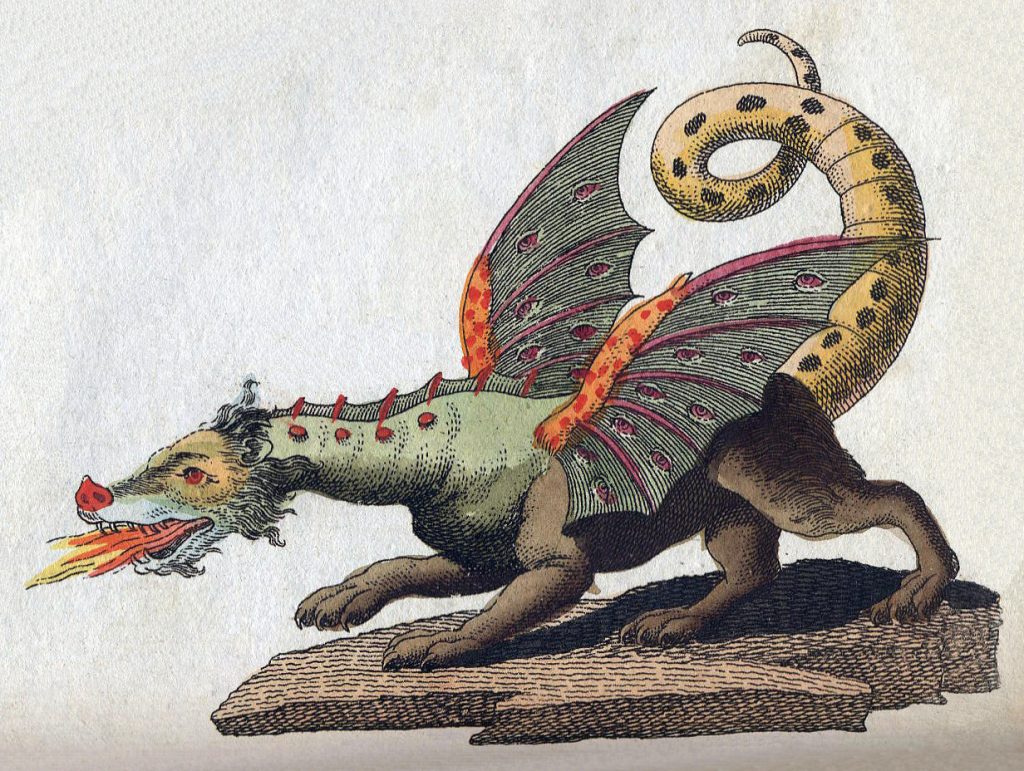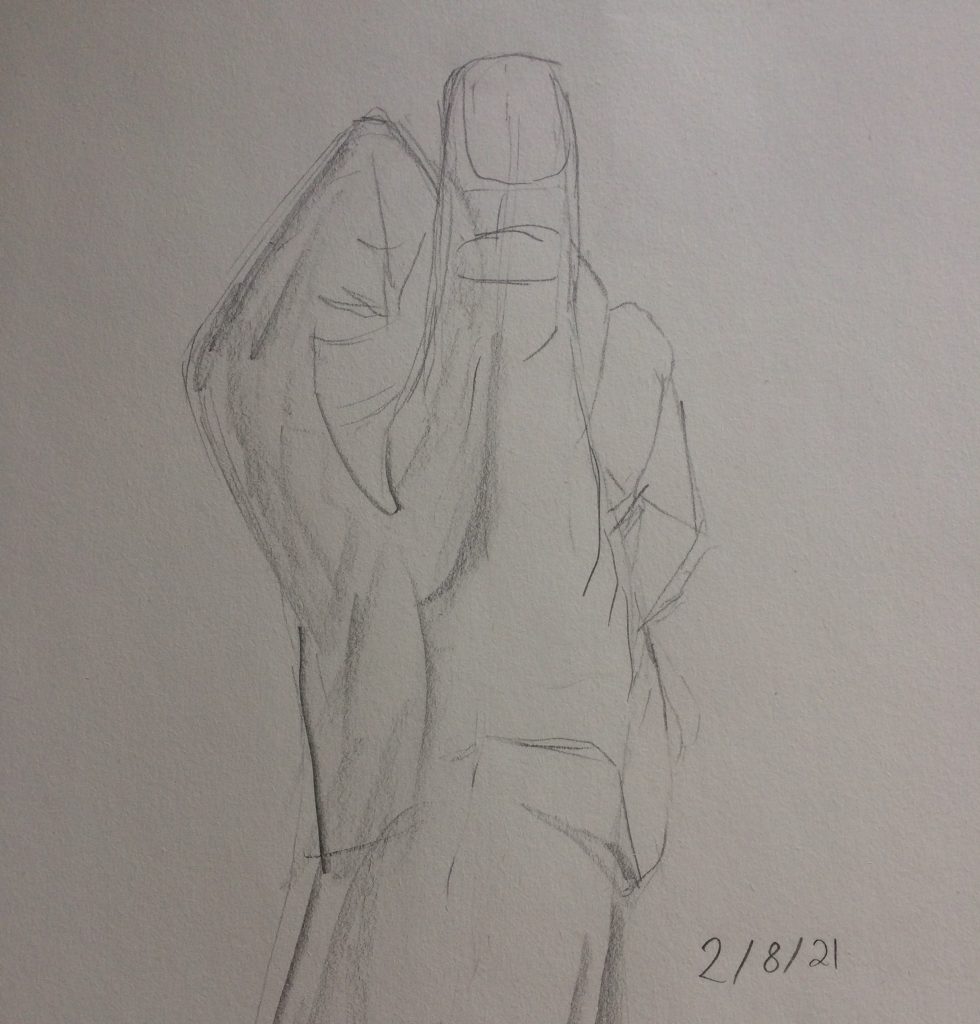with apologies to Dan Reynolds and Daenerys Targaryen
Back in the middle ages, they were four-legged, fire-breathing snakes with wings. This somewhat nonsensical image of dragons has been replaced in modern times with a more, let’s say, “realistic” one, in which they have two legs, and wings integrated with their arms, like bats. (That’s how they appear in both the latest movie version of The Hobbit and the celebrated television series Game of Thrones.) It is much easier now to imagine these creatures as a kind of animal, a sort of relic from the age of dinosaurs. In any case, allowing for differences between oriental and occidental traditions, everyone knows what a dragon is. If I told you to imagine one, you’d probably know what to do.
But it’s importantly not the same thing as picturing a fact you know or recalling a story about something that has happened to you. Dragons don’t exist except in the imagination. We have only pictures and stories of them to tell us what to do. We can’t go and see one for ourselves “in the wild” (or even in a zoo). You can see what J. R. R. Tolkien or Peter Jackson thinks they look like or how George R. R. Martin and the talented people at Pixomondo imagine them. (And apparently there’s been some discussion about whether Drogon and his brothers are even proper dragons.) But, at the end of the day, there’s no way to decide who is right.

In this sense, they’re a bit like the theoretical objects of our conceptual frameworks. We can’t really draw a picture of an atom, an image of how it looks, but we can draw a model of an atom, with the protons and neutrons in the nucleus and the electrons in orbit around it. This model can be true or false, but not in the same way that a picture of a fact is true or false. Likewise, we can’t draw a picture of an organizational hierarchy, again, if we mean by “picture” a visual representation that is true to how things look. But we can draw a model of an organization that represents an “apex”, a “middle line”, and an “operating core”. There’s no place we can go to see these things stacked on top of each other. But there are ways to determine whether it is true or false of a particular organization. Likewise, we can read Tolkien or Martin and we can form an image of their dragons in our minds. We can draw that image and it can be true or false of the descriptions we find in the books. Imagining fantastic creatures is one way to train your conceptual faculties.
“The best dragon ever shown on film, Vermithrax Pejorative,” Martin reminds us, “has two legs and two wings.” Notice two things there. First, dragons can be modeled well or badly; their cinematic representations can be worthy of our admiration. Second, they have characteristics (two legs and two wings) that can be accurately or inaccurately described and then represented in, for example, their skeletal structure. This takes a lot of careful work; just because something doesn’t exist doesn’t mean anything goes when representing it. You have to get it right so it can serve its function in the larger story. In that way, too, imagining a dragon is like imagining a concept of a theory. It has to work in your analysis. One last thing: like concepts, dragons have essential properties. “Wyverns don’t breathe fire.”
